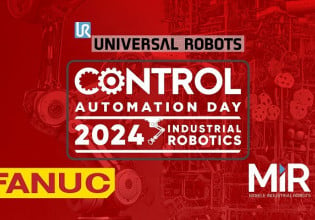B
This raises another possibly fruitful strand - how many of these loops were out of action because the basic concept of the proces design was flawed? I tell my students that many difficult control problems arise where controls
are added to a fundamentally flawed process in an attempt to make it work.
One of my first challenges was the level control associated with a feed vaporiser to a distillation column. The requirement was to take a liquid feed stream from a preceding column, vaporise a proportion of the liquid, and feed the recombined liquid/vapour mixture to the column. The heater was a conventional kettle-type heat exchanger, with liquid being allowed to overflow over a weir and the level downstream of the weir being measured and used to manipulate the liquid flow valve. Position control from this valve was in turn iused to adjust the heat to the exchanger via a bypass valve on the waste heat stream.
The loop was permanently in manual and I was asked to check it out. Did all the usual things - tuning was OK, valves were stroking OK, etc. But it was just not capable of maintaining level in the weir space for any length of time. Then I went back and looked at the numbers.
The vessel was designed to vapourise between 80% and 92% of the liquid coming in. So at any time, the "liquid" in the vessel was most likely to be
highly agitated with a great deal of vapour below the nominal surface. Any minor drop in heat input (this was from a waste recovery stream) reduced
the amount of boiling and the level would fall, so that there was little or no flow over the weir. The only way to hold level under these conditons was to virtually close off the valve. Then a slight increase in heat input would increase the boiloing and flow over would start up ...
I have never been able to understand why the process people like to use weirs in their vessesl. It is a good way of passively ensuring that tubes etc are covered, but when conbined with a conventional control loop greatly reduces the surge buffering capacity, and makes it necessary to make more severe adjustments of manipulated flows.
Bruce.
are added to a fundamentally flawed process in an attempt to make it work.
One of my first challenges was the level control associated with a feed vaporiser to a distillation column. The requirement was to take a liquid feed stream from a preceding column, vaporise a proportion of the liquid, and feed the recombined liquid/vapour mixture to the column. The heater was a conventional kettle-type heat exchanger, with liquid being allowed to overflow over a weir and the level downstream of the weir being measured and used to manipulate the liquid flow valve. Position control from this valve was in turn iused to adjust the heat to the exchanger via a bypass valve on the waste heat stream.
The loop was permanently in manual and I was asked to check it out. Did all the usual things - tuning was OK, valves were stroking OK, etc. But it was just not capable of maintaining level in the weir space for any length of time. Then I went back and looked at the numbers.
The vessel was designed to vapourise between 80% and 92% of the liquid coming in. So at any time, the "liquid" in the vessel was most likely to be
highly agitated with a great deal of vapour below the nominal surface. Any minor drop in heat input (this was from a waste recovery stream) reduced
the amount of boiling and the level would fall, so that there was little or no flow over the weir. The only way to hold level under these conditons was to virtually close off the valve. Then a slight increase in heat input would increase the boiloing and flow over would start up ...
I have never been able to understand why the process people like to use weirs in their vessesl. It is a good way of passively ensuring that tubes etc are covered, but when conbined with a conventional control loop greatly reduces the surge buffering capacity, and makes it necessary to make more severe adjustments of manipulated flows.
Bruce.






